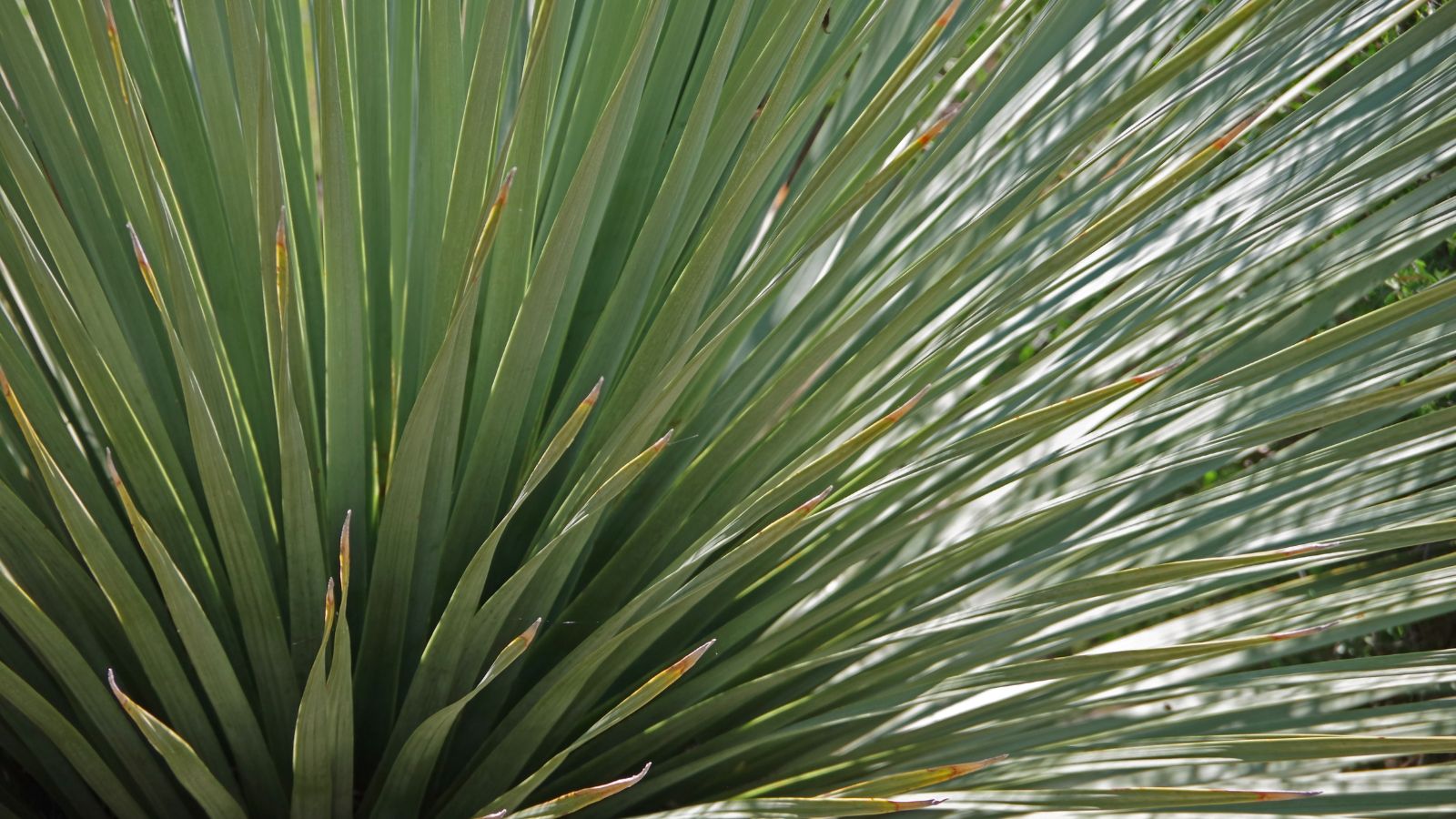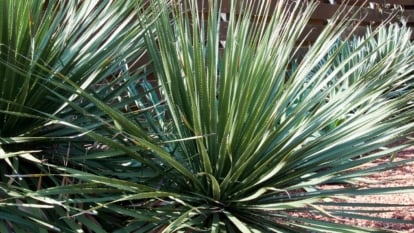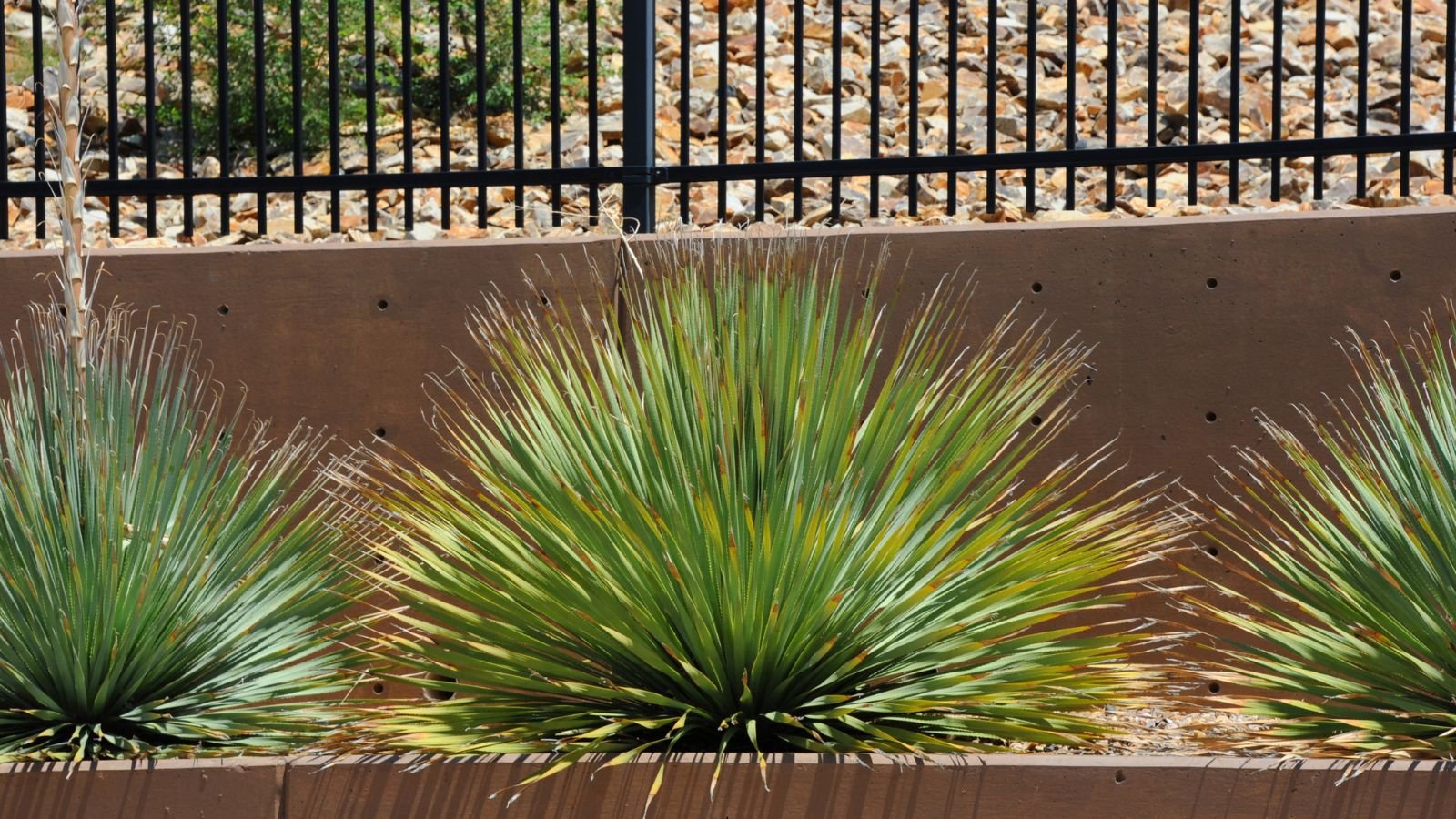How to Plant, Grow, and Care for Dasylirion Wheeleri
Dasylirion wheeleri, aka desert spoon or common sotol, is a gorgeous addition to a drought-tolerant garden. This spiky semi-succulent brings structure and form to a landscape. Kevin Espiritu will share the guide to provide care tips!

Contents
Dasylirion is a small genus consisting of 22 different semi-succulent species. It belongs to the family Asparagaceae. They are found along dry washes, arid lands, and rocky hillsides where the soil is porous and fast-draining in Mexico, up to Arizona, western Texas, and New Mexico.
Although it looks ferocious at first sight, with some care and attention, you can tame it. Consequently, it can be used to add an elegant effect to your gardens. Dasylirion wheeleri looks amazing as part of a desert-themed landscape or a xeriscape garden in arid environments. You may already know it’s used to make sotol, a fragrant alcoholic drink.
In this article, we will be giving you a complete roundup of everything you need to know to grow and care for this attractive evergreen succulent.
Plant Overview

|
Plant
Evergreen succulent
Family
Asparagaceae
Genus
Dasylirion
Species
Dasylirion wheeleri
|
Native Area
Mexico, Arizona and Texas
Exposure
Full sun
Height
5′
Watering Requirements
Low
|
Pests & Diseases
Root rot
Maintenance
Low
Soil Type
Well-draining, sandy
Hardiness Zone
8-11
|
What is a Dasylirion Wheeleri?
Desert spoon, common sotol, or the sotol plant are all common names for Dasylirion wheeleri. This evergreen succulent shows off its large rosette of serrated blue to grayish-green leaves radiating out in a circular axis from the tall stem. The leaf ends tend to become frizzy. Along with serrated leaf margins, it has an overall hazy texture.
Native Area

This long-lived native of the Chiahuahuan Desert of northern Mexico has been naturalized as far north as southern Arizona, western Texas, and New Mexico. Dasylirion wheeleri is one of the species in this genus. It’s native to the arid lands of northern Mexico and the southwestern United States.
Characteristics

It’s a slow to moderate-growing perennial shrub with a single trunk that has no branches. Its upright sword-shaped leaves look stunning. Because of the inward curvature at the leaf bases, it is no surprise that one of its common names is desert spoon.
The leaf blades are grayish-green in color. They are long, slender, and have toothed margins. The stout, short trunk that develops on mature plants grows from nine to fifteen feet tall. They are harvested for multiple reasons in the wilds among Arizona flora, Mexican forbs, and Texan prairies and deserts. Because of over-harvesting, they’re now salvage restricted. Some live for up to 100 years.
Once mature, it blooms in early summer with a pole-like stalk of tiny flowers. Flowering occurs only every few years on flower spikes of clustered tiny blooms that grow in late spring to summer. The color of the flower indicates the gender. Male flowers are creamy yellow hues, while female flowers are purple-pink.
These striking features have helped it win the Royal Horticultural Society Award of Garden Merit. As the name suggests, it is used to make an alcoholic beverage called sotol, which has a long history of consumption among the people of Mexico, who first cultivated the root of the plant for the beverage 300 years ago.
Planting

Dasylirion wheeleri thrives in arid conditions, so first find a sunny spot for it. Dig a hole twice as wide as the root ball but only as deep as the roots. Gently remove from its container and place it in the hole, making sure the crown is level with the surrounding soil. Backfill the hole, lightly tamping down the soil to remove air pockets, and water thoroughly to help establish the roots. Although drought-tolerant, water is occasionally used during the first growing season to aid establishment, then watering is reduced as it matures. Avoid overwatering, as this can cause root rot. Mulching is generally unnecessary and can trap moisture around the base, which is not ideal for this species.
How to Grow
Common sotol or spoon is a slow-growing, durable, carefree and drought-tolerant native to arid lands. Here are some specific care requirements for this perennial succulent xeriscape species.
Light

These semi-succulents are sun-loving and native to hot climates. They are best grown in full sun. They can tolerate partial sun as well. It is hardy in USDA Zones 8-11.
Water

It has few watering needs. This is a drought-tolerant species that prefers dry conditions. Give it one inch of water each week when it is established. However, you may have to water regularly during an extended drought in hot summers. After establishment, don’t apply extra water. Avoid watering the crown, as that may result in root rot. During winter, you can reduce the frequency of watering even further. Most of the time, natural precipitation is enough.
Soil

Common sotol likes porous soils such as garden loam soil, sandy soil, and clay soil. These require higher concentrations of sand that provide fast drainage. The preferred pH range for the soil is between 5.5 and 6.7. A soil test can tell you if you’re in that range.
Temperature

Dasylirion wheeleri prefers higher temperatures but will show some heat stress above 100°F (38°C). They cannot stand very long periods of frost.
They should be grown in areas where the temperature doesn’t go below 0°F (-18°C) in winter. Consistent exposure to these temperatures can kill them. Since they’re difficult to grow indoors, you may want to drape a frost blanket of some kind over it if sub-freezing temperatures persist.
Fertilizer

You don’t really need to fertilize, as it can tolerate poor soils, however, light spring fertilization with a balanced formula will ensure good growth. Young common sotol benefits from a high phosphorus fertilizer applied sparingly in the first year of growth. This helps them establish their roots in the soil.
Maintenance

Being a slow grower, it does not require pruning as such. You can remove dried, spent flowers as needed. Prune out dried, yellow, or senescent lower leaves at any time of the year. Try not to prune otherwise, as this can damage it. Always wear gloves when you remove dead leaves to protect your hands from serrations on the fresh green leaves.
Propagation

You can propagate by seeds or by cuttings. Growing it from seeds is quite time-consuming as germination and establishment are slow. Instead, take a cutting from a parent with sterilized shears. Choose one that’s at least a few feet tall and a few years old. Set the cutting in a dry place out of direct sunlight to allow a callous to form over the cut.
Plant it in a small pot in the same soil used to grow the parent, and lightly water. Keep the container in a bright, dry area. Within two to four weeks, you’ll have a baby sotol.
Common Problems
There are no serious growing problems with Dasylirion wheeleri. You just have to make sure that the soil in which they’re growing drains well. Chronically wet soil can lead to root rot.
Growing Problems

Serious growing problems don’t occur unless you’ve planted your common sotol in the wrong conditions. It is imperative to ensure it has well-draining soil, full sun, and not too much water, and you’re set. ,
Diseases

Dasylirion wheeleri does not suffer from any particular disease. High humidity or overly wet soil can sometimes lead to fungal infections of root rot. There is no treatment for root rot once it sets in, and while they may be dug up and the rotten roots removed, this is often more traumatic for the plant than it’s worth. It’s easier to ensure the soil drains well from the start. Remember, these succulents are desert-dwellers and aren’t accustomed to lots of moisture.
Frequently Asked Questions
Do Dasylirion wheeleri plants flower every year?
No, they don’t bloom every year. They will produce flowers once every three to five years.
Why are my Dasylirion wheeleri leaves turning yellow?
Because they are quite sensitive to moisture and humidity, yellow leaves often appear as a result of root rot. To prevent this, make sure you have planted them in well-draining soil, and in addition, keep the watering frequency to a minimum. Furthermore, the soil should be completely dry in between waterings.
Is Dasylirion Wheeleri an agave?
No, though it’s a member of the Asparagaceae family as well.
Is a desert spoon a yucca?
It may look like a yucca, but it’s technically not one.
Why is it called desert spoon?
This is related to the spoon-like indentations on its leaf bases.
How do you prune Dasylirion?
Prune the dried-out leaves that develop at the base any time of year. No other pruning is needed.
How often does a desert spoon bloom?
It only blooms every few years.
Is desert spoon a succulent?
Yes! It’s an evergreen succulent that looks great in desert gardens.









